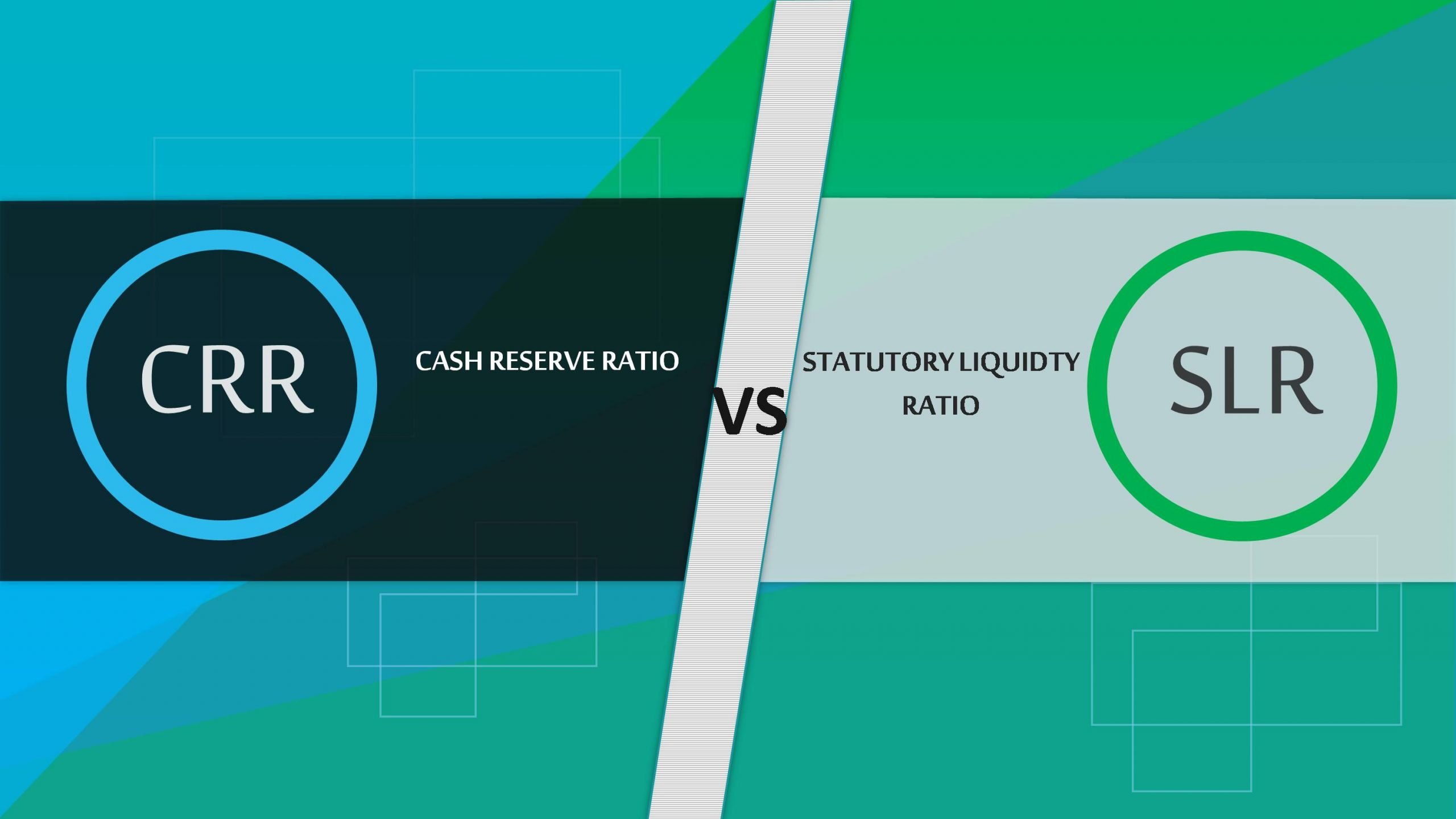In this article, we will discuss the difference between CRR and SLR but before I start let us understand some theory behind cash reserve ratio and statutory liquidity ratio.
The Central Bank of India ie. Reserve Bank of India (RBI) regulates the supply of money in the economy through its monetary policy to control the rate of inflation, recession in the economy. Both CRR and SLR are the instruments of monetary policy of RBI which are exercised to control the flow of funds in the market and also to overcome the recession.
Table of Contents
CRR vs SLR:
The Reserve Bank of India has full control over the rate of CRR as well as SLR and according to the scenario, the CRR and SLR rates are determined. Hence, let us first understand the meaning of Cash Reserve Ratio (CRR) and Statutory Liquidity Ratio (SLR) before we dig down the difference between CRR and SLR.
Cash Reserve Ratio (CRR) refers to some proportion of NDTL that have to be maintained by the commercial banks in the form of cash under the custody of the Central Bank, the Apex Bank of a country.
On the other hand, the Statutory Liquidity Ratio (SLR) refers to the proportion of NDTL (Net Demand and Time Liabilities) which is mandatory to maintain with the banks themselves but in the form of liquid assets such as Cash, Gold, Government Securities.
For more details follow the links below:
CRR vs SLR (Comparison Table):
| Basis of Comparison | Cash Reserve Ratio | Statutory Liquidity Ratio |
|---|---|---|
| Meaning | Certain percentage of NDTL reserved with RBI in cash only. | Certain percentage of NDTL reserved with itself as liquid assets. |
| Regulated From | Section 42, RBI Act 1934 | Section 2, Banking Regulation Act |
| Custody | Central Bank (RBI) | Banks |
| Interest | NO | YES |
| Objective | To control flow of funds in the economy | To ensure solvency of banks and to avoid cash crunch |
| Form of Reserve | Cash | Precious metals, Government approved securities, cash |
Difference Between CRR and SLR:
The key differences between Cash Reserve Ratio (CRR) and Statutory Liquidity Ratio (SLR) are explained below.
- Cash Reserve Ratio is defined and executed under Section 42, Reserve Bank of India Act 1934 whereas Statutory Liquidity Ratio is regulated under Section 24, the Banking Regulation Act 1949.
- CRR is maintained in the form of cash only whereas SLR can be maintained as liquid assets, for examples: Cash, precious metal (like Gold), Government approved securities (State or Central).
- CRR is reserved with the Central Bank (RBI), on the other hand, SLR is maintained with the bank itself.
- CRR doesn’t provide any returns to the banks, on the other hand, commercial banks get returns in case of SLR.
- The main objective cash reserve ratio is to control the liquidity in the economy, on the other hand, the objective of statutory liquidity ratio is to ensure banks solvency and to avoid a cash crunch.
Conclusion:
Hope this article would be able to clear all your doubt regarding the difference between CRR and SLR. In a nutshell, we can conclude that CRR has to be maintained in cash with RBI (No interest) whereas SLR is in liquid assets with themselves and entitled to get returns as well.
Recommended Articles:
What is Repo and Reverse Repo Rate?
References: Reserve Bank of India, livemint
